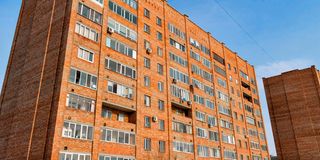Building with clay: Its minimal environmental impact makes it perfect for creating eco-friendly buildings

Clay is a testament to the potential of harnessing natural resources in harmony with ecological principles.
What you need to know:
- Clay's versatility encompasses aesthetics, enabling architects to create structures that seamlessly blend with their surroundings
- Clay's adaptability translates into reduced environmental impact
- Clay's versatility extends to its ability to withstand environmental stresses.
Clay, a humble natural resource that has been utilised by civilisations throughout history, has emerged as a cornerstone of sustainable construction practices. Its exceptional properties and minimal environmental impact make it a favoured choice for architects and developers striving to create eco-friendly structures that stand the test of time.
From ancient civilisations crafting clay bricks to modern lean manufacturing processes, the journey of clay in construction has been one of evolution, innovation, and unwavering commitment to sustainability.
While the image that comes to mind when one hears of clay might be simple houses made with unrefined bricks, clay buildings can be as aesthetically pleasing and of high quality as those made of other materials such as stone, if not better. To shed more light on this naturally abundant construction material that is somewhat easily overlooked, DN2 Property engaged the expert contribution of Louis Kariuki, a Monitoring and Evaluation Expert at Kenya Green Building Society.

Clay bricks.
A brief historical journey of clay in construction
Clay's historical significance in construction dates back centuries, with civilisations across the globe harnessing its malleability and durability. The Mesopotamians paved the way for sustainable building practices by crafting clay bricks, laying the foundation for architectural advancements. The iconic clay structures of ancient China, exemplified by the Great Wall, showcase the material's ability to endure for generations.
As time progressed, the art of clay manipulation evolved into a science. Modern manufacturing techniques, refined over decades, have enabled the production of clay products with improved quality and reduced environmental impact. The transition to lean manufacturing practices has revolutionised the clay industry, ensuring optimal resource utilisation, minimal waste and energy efficiency.
Advantages of clay in sustainable construction
Clay's versatility brings forth a multitude of advantages that contribute to sustainable construction practices, addressing the core questions of energy efficiency, durability, and environmental impact:
Energy efficiency: The ability to create various construction elements, such as walls and roofs, from clay underscores its energy-efficient nature. Clay's thermal properties contribute to effective temperature regulation, reducing the need for excessive heating or cooling. This, in turn, aligns with green building standards and addresses the question of energy-efficient materials.
Durability and longevity: Clay's versatility extends to its ability to withstand environmental stresses. Whether as wall bricks or roofing tiles, clay products offer remarkable durability and longevity, reducing the need for frequent replacements and conserving resources over the building's lifecycle. Clay structures can last as long as 100 years.
Environmental impact: Clay's adaptability translates into reduced environmental impact. Localised sourcing of clay-rich soil minimises transportation-related emissions, while efficient manufacturing processes and closed-loop production systems contribute to waste reduction and resource conservation.
Versatile aesthetics: Clay's versatility encompasses aesthetics, enabling architects to create structures that seamlessly blend with their surroundings. Clay's range of textures, colours, and finishes ensures that buildings, facades, and open spaces contribute to the visual appeal of their surroundings, enhancing the overall built environment.
Clay's contribution to reducing carbon footprint
In an era of heightened environmental awareness, reducing carbon emissions is paramount. Clay's manufacturing process, particularly in contemporary facilities, demonstrates a significantly smaller carbon footprint compared to conventional building materials. The adoption of efficient technologies, reduced water consumption, and the reuse of waste materials all contribute to minimising energy consumption and emissions. The role of clay in green buildings extends beyond carbon reduction. Its innate thermal efficiency, resistance to fire, and superior acoustic properties make it an ideal choice for architects and builders seeking to create sustainable structures that prioritise occupant well-being and environmental stewardship.

Brick house.
The manufacturing process
The manufacturing process of clay products involves a series of well-defined steps that transform raw clay and other materials into durable, functional, and aesthetically pleasing construction elements. From the selection of suitable soil to the final firing stage, each step plays a crucial role in ensuring the quality and sustainability of the end product.
Soil selection
The choice of soil is a fundamental aspect of clay product manufacturing. Different types of clay and clay-rich soils are selected based on their mineral composition, plasticity, shrinkage, and firing properties. Common clay minerals used include kaolin, illite, and montmorillonite. The soil must be finely milled to ensure uniformity and proper mixing.
Mining and preparation
Extraction: The process begins with the extraction of raw materials, which involves mining clay deposits from the earth's surface or underground. The selected clay is often mixed with other materials such as sand or shale, to enhance its properties.
Weathering and blending: The extracted clay is left to weather, exposing it to natural elements like air and water. This process improves plasticity and workability. The weathered clay is then blended with other materials to achieve the desired characteristics, such as colour, texture, and strength.
Mixing and forming
The blended clay is thoroughly mixed with water to create a homogeneous slurry or paste. This mixing process ensures that the clay particles are evenly distributed, resulting in consistent product quality. The clay is then shaped into the desired form using various methods, such as extrusion, moulding, or pressing. For example, clay bricks can be formed using moulds, while clay tiles may be extruded through specialised machinery.
Drying
The newly formed clay products are left to air dry, allowing excess water to evaporate. Proper drying is crucial to prevent cracking and warping during the firing process.

Clay's versatility brings forth a multitude of advantages that contribute to sustainable construction practices.
Firing
The dried clay products are preheated to a specific temperature to remove any remaining water and volatile organic compounds. The preheated products are then subjected to high temperatures in a kiln, typically reaching temperatures above 1000 degrees Celsius. During firing, clay minerals undergo chemical and physical transformations, resulting in the formation of a dense and durable ceramic matrix.
Traditionally, fired clay bricks were frowned upon by sustainability experts in the construction industry as the use of wood fuel and coal in the firing process increased the embodied energy of the bricks – a metric used to measure the amount of energy used to manufacture building materials. In an effort to reduce greenhouse gas emissions in the manufacturing process, the use of local wood fuel and coal in the firing process has since been discouraged and sustainable fuel alternatives explored such as coffee husks or saw dust.
Cooling and finishing
After firing, the products are allowed to cool gradually in the kiln to avoid thermal stress and cracking. Once cooled, the clay products undergo finishing processes, such as glazing, if desired. Glazing enhances the aesthetics, durability, and water resistance of the products.
Quality control and usage
The final products undergo rigorous quality control measures to ensure they meet industry standards for strength, dimensions, and appearance. The manufactured clay products are then ready for use in various construction applications.

Louis Kariuki, monitoring and evaluation officer at Kenya Green Building Society.
Factors considered while selecting clay soil
The choice of soil is pivotal in determining the quality, characteristics, and performance of clay products. The following are some factors that influence soil selection:
Plasticity: clay should exhibit suitable plasticity to facilitate shaping and forming during manufacturing.
Shrinkage: clay should have controlled shrinkage properties to prevent cracking and warping during drying and firing.
Firing temperature: different clay minerals require specific firing temperatures to achieve desired product properties.
Colour and texture: The appearance of the final product is influenced by the colour and texture of the selected clay.
Workability: The ease with which the clay can be mixed, shaped, and formed is crucial for efficient manufacturing.
Strength and durability: The inherent strength and durability of the clay influence the longevity and performance of the final product.
Clay products available in the local market
Clay's versatility is exemplified through its diverse applications in construction. The range of clay products available, each with its unique attributes, ensures that there is a suitable solution for various architectural needs. Let's delve into some specific clay products and their applications:
Roofing tiles and ridges: clay roofing tiles serve as a testament to both form and function. Not only do they provide effective protection against the elements, but their thermal properties also contribute to energy efficiency. With a variety of shapes, sizes, and colours available, clay roofing tiles enhance the aesthetic appeal of buildings while maintaining sustainability.
Wall bricks and half-facing bricks: clay wall bricks and half-facing bricks play a vital role in constructing sturdy, resilient walls. Their insulating properties help regulate indoor temperatures, contributing to energy conservation. Additionally, these bricks come in an array of textures and finishes, allowing architects to achieve the desired visual impact while upholding sustainability principles.
Floor tiles and suspended floor units: among the diverse clay products, suspended floor units stand out as a prime example of functionality and sustainability. Suspended floor units, also known as clay pot or block and beam systems, offer several advantages that contribute to green building practices.
These systems consist of precast concrete beams with clay blocks or pots placed between them. This configuration creates a sturdy yet lightweight structure that enhances load-bearing capacity and thermal performance. The clay blocks not only contribute to efficient thermal regulation within the building but also possess excellent fire resistance properties, enhancing overall safety.
Suspended floor units are particularly beneficial in multi-story buildings, where they facilitate rapid construction and minimise the use of additional materials. The thermal mass provided by clay contributes to reduced energy consumption for heating and cooling, thereby lowering operational costs and environmental impact.
Window sills/skirting and partition blocks: Clay-based window sills and skirting add a touch of sophistication to interior spaces while aligning with sustainable building practices. Partition blocks made from clay provide architects and designers with the flexibility to create adaptable layouts, ensuring efficient space utilization.
Decorative grills: Clay's versatility extends beyond utilitarian applications to encompass decorative elements such as grills. These intricate designs enhance the visual appeal of buildings while reflecting.
Open spaces and gardens: Beyond the confines of buildings, clay finds a home in open spaces and gardens. Clay pavers, walkways, and garden elements contribute to a harmonious and sustainable outdoor environment.
In conclusion: As we look to the future of sustainable building practices, clay stands as a testament to the potential of harnessing natural resources in harmony with ecological principles. With its enduring legacy and ongoing evolution, clay remains a symbol of humanity's ability to coexist with the environment and build a greener, more resilient world for generations to come.





